5 LDS Temples Inspired By Their Physical Locations
Back when President Gordon B. Hinkley was the prophet, he announced many temples. In order to make construction faster, many of these LDS temples look the same. Because these temples are so similar to each other, the carefully curated ones are extra interesting.
On the other hand, quite a few LDS temples are carefully created so that the design complements the surrounding landscape. For example, the Rome Italy Temple is made of the same marble as other ancient buildings in the city. Here are 5 LDS Temples inspired by their physical locations.
Paris France Temple
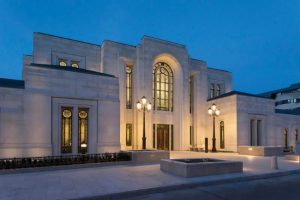
While traveling through Europe in 2019, I had the pleasure of being able to do an endowment session in the Paris France Temple. I had spent most of my trip in art museums and the day before attending the temple I saw Monet’s famous “Water Lilies” painting.
While sitting in the celestial room, a temple worker spoke with me and my friends about the inspiration for the design of this temple. She spoke about how decor inside the temple is inspired by Monet’s “Water Lilies” series.
Claude Monet was an impressionist painter who originated from France. The Paris temple was the first temple in the country of France and designers wanted to pay homage to the artist. The most notable places where “water lilies” are incorporated are in the stained glass windows and skylights.
This temple is a short walk down the street from the Palace of Versailles, which makes the exterior’s simplicity that much more meaningful. But while the exterior may seem modest, the interior is exquisite.
Provo City Center
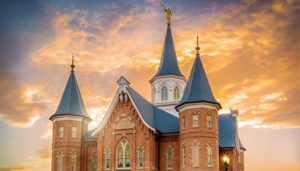
We all know the story of this historic tabernacle. When the original building burned down it was rebuilt as a temple in the center of Provo. While this temple is newer compared to other historic LDS temples in Utah, it is just as full of historic significance. Its history goes back much further than its dedication in March 2016.
The remodel of the ruins of the Provo Tabernacle incorporated what was left of the original structure of the building. This temple works perfectly with its surroundings. The library across the street is made of the same type of brick as well.
The details of this temple pay homage to its historical roots. There are beehives topping the fences around the building and scalloped shingles that match the style of the original building. The transformation from a condemned building, to a pile of rubble, to a temple is a story that is inspiring.
Tucson Arizona Temple
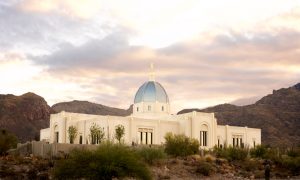
The blue dome on this temple may seem out of place at first. The temple is placed right in the Cataline Foothills of Arizona. The original plan was to build a 95-foot steeple but plans changed due to zoning issues and the blue dome was included instead. This is the same style dome that tops Italy’s Florence Cathedral.
A 2017 Deseret News article stated, “In a word, the temple and its dome simply “fits” — fits because it borrows from and blends with not only Tucson’s own traditions but a taste of Italy’s Tuscany region. And it fits with local zoning allowances as well.”
When looking at the architecture of Tuscon, architects noticed a theme of domes throughout the city. The restriction “enabled us to do something that didn’t require obtaining a variance and captured beautifully the architectural character of the Tucson area.”
Bangkok Thailand Temple
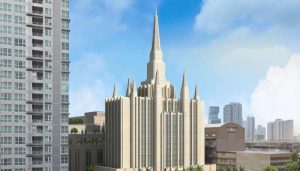
This temple was just recently announced and its estimated completion date is early 2023. That being said, we have a rendering of what the temple will look like when it is finished. We are excited to see what the temple looks like upon its completion and what features and small details will be added to complete the look.
Because the temple is not yet completed, we will focus on the exterior features here. The design includes nine spires but no angel Moroni. It seems as though the spires take inspiration from another prominent temple in Thailand.
Wat Phra Kaew is a Buddhist temple and a famous landmark in Thailand. This landmark also has decorative spires. This kind of design is common in historical buildings in the area so it only makes sense that temple architects would pull inspiration from those surroundings.
Philadelphia Pennsylvania Temple
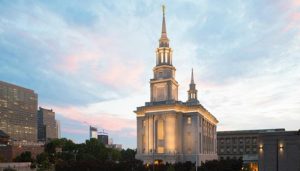
The Philadelphia, Pennsylvania Temple, like many others, was built in a similar style to the buildings around it. Many LDS temples are full of Church history. Despite its recent dedication, this temple is full of American history. The dedication of this temple was on the 240th anniversary of the signing of the Declaration of Independence, in the same area that it was signed.
The Church of Jesus Christ Temples website states, “The Philadelphia Pennsylvania Temple was designed in the neoclassical style with a wall height that matches the height of the neighboring neoclassical Philadelphia Family Court Building (soon to be repurposed as a hotel) and the Philadelphia Free Library, both located just west of the temple.”
The Messages of Christ YouTube channel has a wonderful video about the architecture and interior design of this temple. Among some of my favorite details is the intricate millwork included inside the temple.
Which type of temple architecture is your favorite? Share in the comments.


